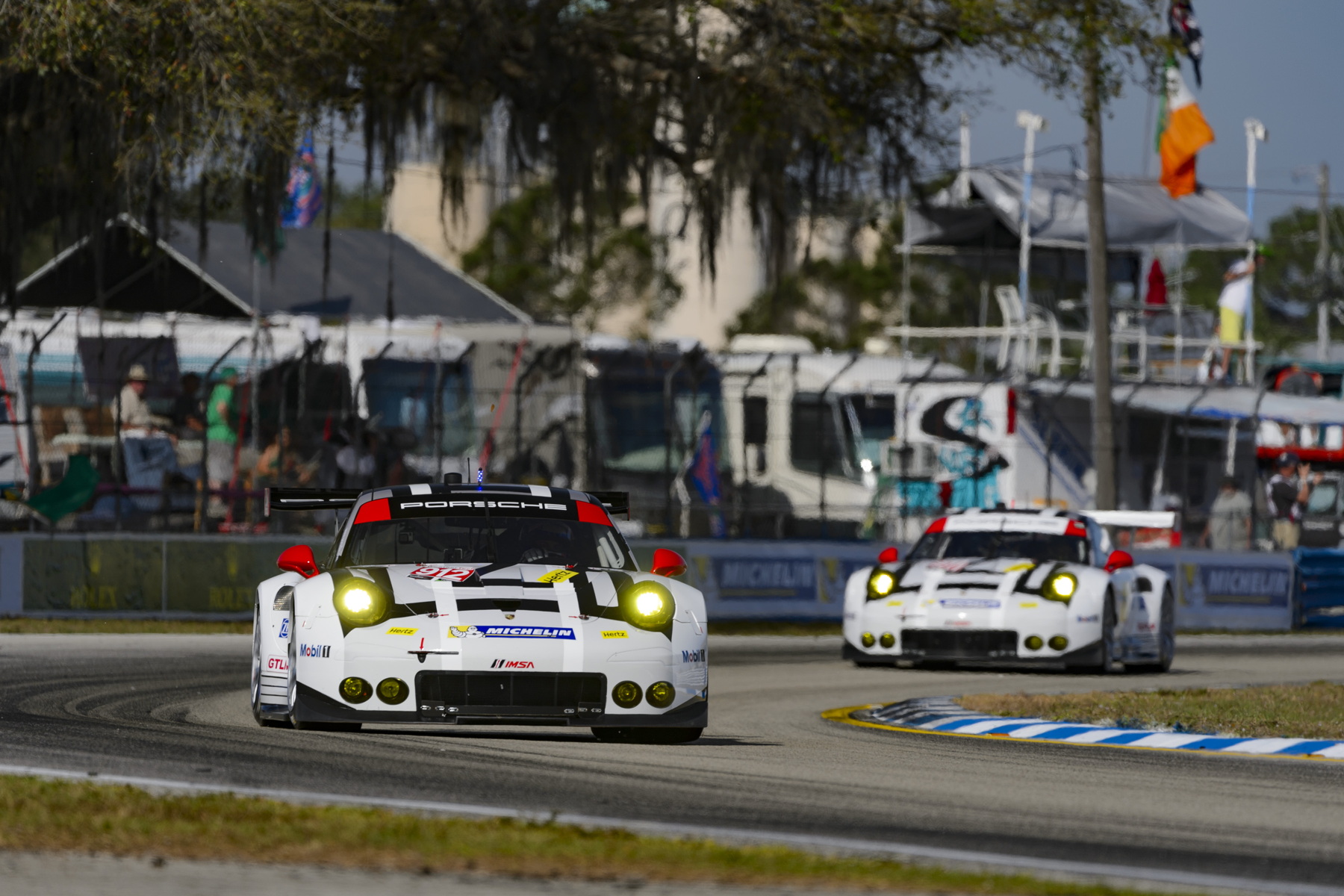2016 WeatherTech USCC: 12 Hours of Sebring preview
Like most of the endurance racing monuments, the 12 Hours of Sebring is a race that has been kind to Porsche over the years. Since the event’s inception in 1950, cars from Zuffenhausen have taken 17 overall victories around the bumpy ex-airfield circuit.
Porsche’s first win came in 1960 courtesy of Hans Hermann (later Porsche’s first overall Le Mans winners) and Olivier Gendebien in an RS-60. Between 1976 and 1988, Stuttgart went unbeaten at Sebring, with the majority of those victories taken by Carrera RSRs, 934s and 935 (all Porsche 911 derivatives).
In recent years, the Porsche 911 has had to settle for class victories at Sebring and, over the last decade only two of these have gone the way of Weissach, in 2007 and most recently in 2014 when Patrick Long, Michael Christensen and Jörg Bergmeister triumphed in the 991 RSR.

PNAR were 60 minutes away from adding to that tally last year when the no. 911 machine of Nick Tandy, Patrick Pilet and Richard Lietz developed a gearbox issue that dropped the former from first to fifth.
The 991-generation Porsche 911 RSR has undoubtedly gelled better with the 3.74-mile Sebring International Raceway course than its 997 predecessor though, with the two factory cars proving to be among the fastest GTLM class competitors over the last few years.
That was borne out in yesterday’s free practice sessions where the white-and-black factory 911 RSRs once again found themselves near the head of the timesheets.

Earl Bamber, Frédéric Makowiecki and Michael Christensen in the no. 912 Porsche were only bettered in the first session by the no. 25 BMW M6, while the no. 911 machine of Nick Tandy, Patrick Pilet and Kévin Estre was only a tenth of a second further back in third.
Come the night session, Pilet was able to put the no. 911 RSR at the top of the timing screens with a lap of 2m00.041s, while the sister car finished the session in fourth. The strong performances suggest that Porsche may well be able to lock out the front row of the grid, as it did last season.
However, the one sticking point remains the 911 RSRs reliability. While the no. 912 machine enjoyed a near faultless run last time out at Daytona (eventually finishing third), the no. 911 car was put out of contention with a driveshaft issue.

If there is a race where mechanical gremlins are highlighted, it’s the 12 Hours of Sebring, where the uneven concrete and tarmac surface is known for literally shaking cars to pieces.
GTLM class qualifying takes place at 3:55pm ET today (8:55pm GMT) ahead of the 64th running of Florida’s second endurance race of the season on Saturday, flagged away at 10:40am local time.
For all the latest Porsche 911 race news and reports, make sure to check out our dedicated motorsport section now.


Comments (0)